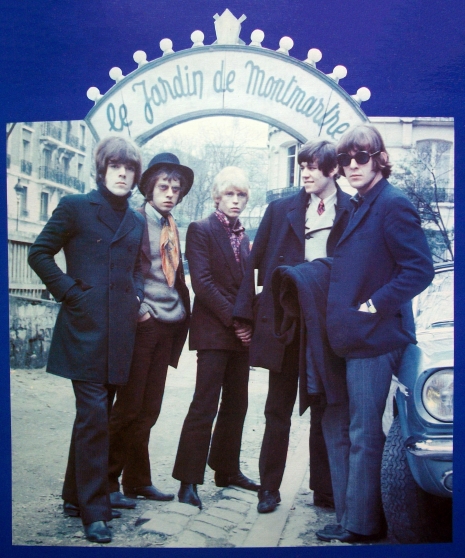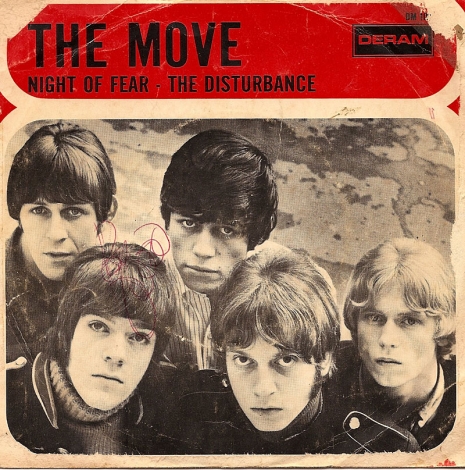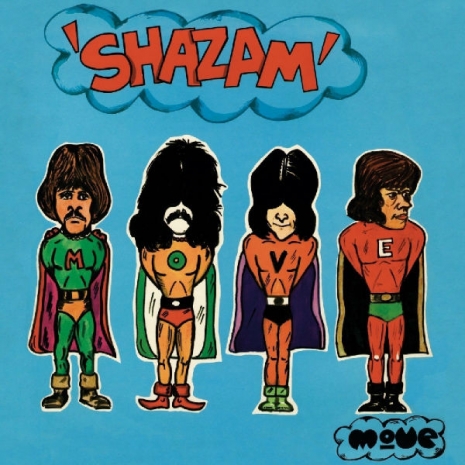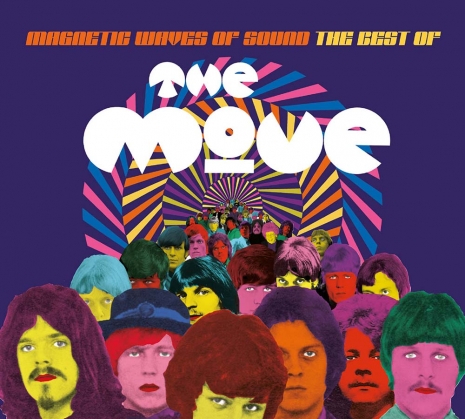
The Move was probably the biggest British group of the late 60s/early 70s who utterly failed to make any sort of impression on the American market. Nearly every biography written about them begins that way as if it’s the most important thing about the Move. It’s not, although it does provide a bit of (perhaps necessary) context. In England the Move had nine top 20 hits and was arguably ranked just below the Who (and just above the Pretty Things) in terms of pop group popularity. In the US however the Move never really made a dent in the charts, and are recalled—if they are recalled much at all—more as the predecessor to the Electric Light Orchestra, or merely a footnote in that band’s story, than for their own merits. It’s rare to find a Move album when you are crate digging on this side of the pond.
It’s true, in America still to this day the Move would be considered downright obscure, but on (very, very rare) occasion (as in almost never), one does meet a total Roy Wood fanatic. In fact, I used to work with a nerdy guy who pretty much listened only to Wood’s various incarnations (The Move, early ELO, Wizzard, and solo)—along with Be Bop Deluxe/Bill Nelson, Todd Rundgren, and Kate Bush—to the exclusivity of all other music. He had very specific tastes that guy, but God bless ‘im, he truly knew what he liked. And as such, this weirdo was the perfect ultimate Roy Wood fanboy. That he was from Florida shows you how hard he had to work for it.

The Move‘s original five-piece line-up formed in 1965 when teenaged guitarist Roy Wood (the band’s principle songwriter), drummer Bev Bevan, bassist Ace Kefford, vocalist Carl Wayne (older than the rest of them) and guitarist Trevor Burton “moved” from the ranks of several other semi-successful Birmingham-based bands to play together in a new Brummie “supergroup.” Like a heavier Hollies, four of the quintet were capable of handling vocals and although golden-throated Carl Wayne tended to take the lead, they also switched off that everyone got a turn in the spotlight. They were managed, first by Moody Blues manager Tony Secunda—who dressed the Move in Mod gangster suits, hired strippers for their stage act and got the band a residency at the Marquee club in London—and then later by a proper gangster, the notorious Don Arden, father of Sharon Osbourne, the former manager of Small Faces.
During one of their Marquee dates the group caused a fire after they’d smashed some television sets onstage with an ax. Three fire engines showed up to fight the blaze, inspiring front page headlines and the subject matter for a future hit single. Then Secunda, without consulting with the group, devised a controversial marketing campaign for the “Flowers in the Rain” single—the first record to be played on BBC Radio 1 and their third consecutive top five hit of 1967—consisting of a postcard depicting Prime Minister Harold Wilson in bed with his secretary. Wilson brought litigation against the Move for Secunda’s actions, which he won costing them—specifically Roy Wood who wrote the number and had nothing to do with the publicity stunt—their royalties for the hit, which were donated to charity. This led to Secunda’s firing and Arden’s hiring. In fall of 1967, the group took part in a two-week-long concert package tour around the UK, playing twice a night with the Jimi Hendrix Experience, Pink Floyd and the Nice.

One major reason the Move never broke the American market is that they never toured here. They tried to—opening two shows for the Stooges before things fell apart—but it was a demoralizing disaster. Another reason might be their overt “Englishness” which would have been a turn off to many American rock fans at the time. The Move were as British as Marmite and Coronation Street, and in that sense, their singles provide the blueprint for much of the British rock that came in their wake—obviously glam rock, but prog (they were incorporating classical music bits earlier than anyone save for Bee Bumble and the Stingers), punk (the bassline in “God Save the Queen” was based on “Fire Brigade”) and 90s Britpop. It’s quite easy to hear their influence on Blur, for instance.

Magnetic Waves of Sound is the title of a new must-own Move compilation that has just been put out via Cherry Red’s heroic Esoteric Recordings label. Aside from perhaps the very best sounding versions of their hits on CD that I’ve ever heard—half in punchy mono—there is a second disc, a DVD, consisting of German and UK television performances from between 1967 and 1970 including their extended set on Colour Me Pop in 1969. All of these videos are presented in exceptionally good quality and they sound great, too. If this set doesn’t make you an instant Move fan, well, fuck you then, you’ve got shit taste in music.
And don’t try to tell me that KISS didn’t base their entire sound on the stomp-all-over-yer-face “Brontosaurus,” because they so obviously fucking did. (And just where do you think Paul Stanley got his “starchild” look from? Grow up!.)
“Brontosaurus” on Germany’s Beat-Club’ TV show.
“Fire Brigade,” a top 3 single in 1968.
The complete ‘Colour Me Pop’ performance. This can be seen in excellent quality on the new DVD.